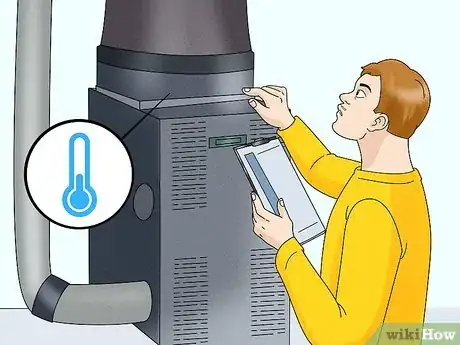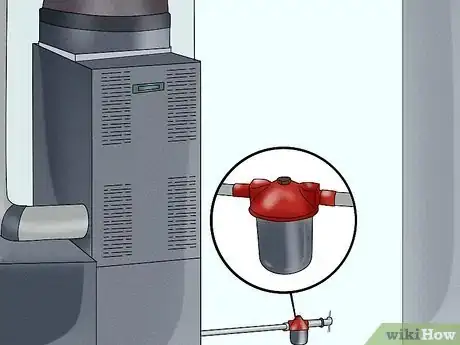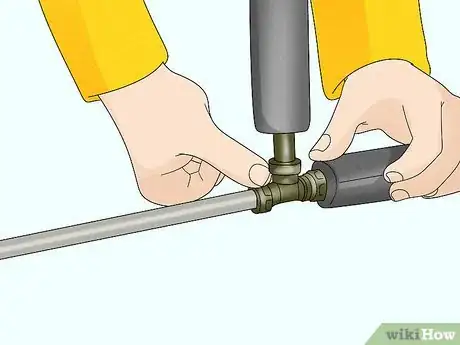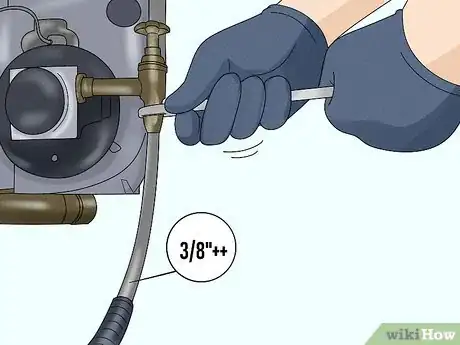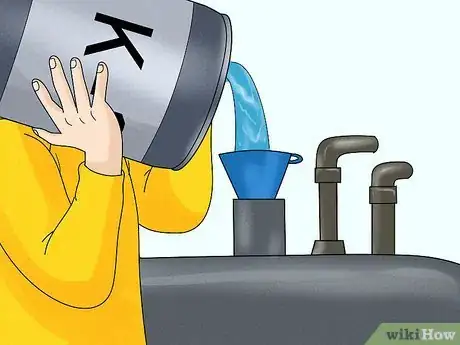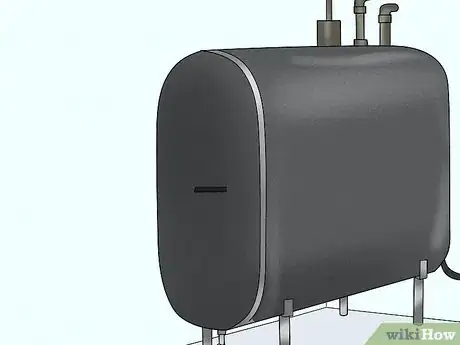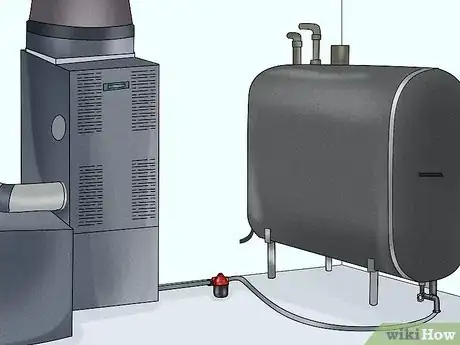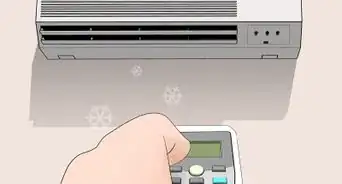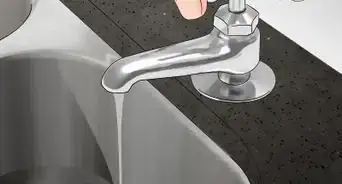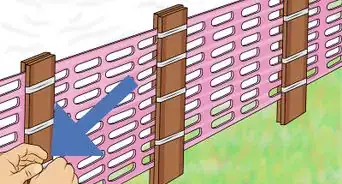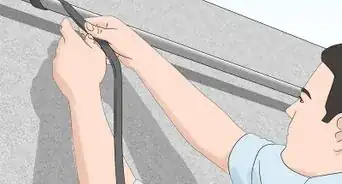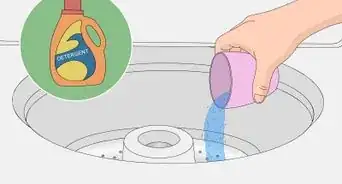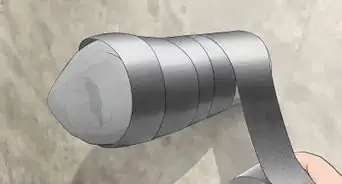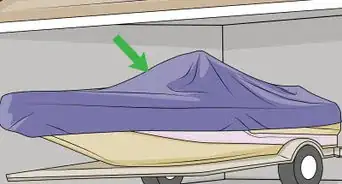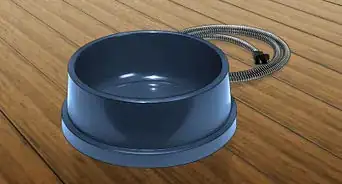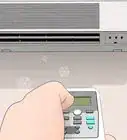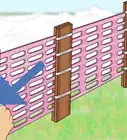wikiHow is a “wiki,” similar to Wikipedia, which means that many of our articles are co-written by multiple authors. To create this article, 16 people, some anonymous, worked to edit and improve it over time.
This article has been viewed 195,282 times.
Learn more...
"Home Heating Oil" also called "# 2 fuel oil" (or simply "Number 2 Oil") is a fuel used to heat buildings, homes and water. This heating method is very popular in the New England area. The #2 fuel oils (both clear diesel fuel and dyed home heating oil) do not freeze but rather "gel" or thicken to a soft wax. This begins to occur when temperatures drop below 32F, when the fuel starts to become "cloudy" (but still flows readily). As temperatures continue to drop (20F to 15F), wax or paraffin in the fuel begins to crystallize and separates from the oil. These crystals collect on filter surfaces and cling to the interior walls of the fuel lines that are subjected to these low temperatures and can reduce oil flow rates enough that the furnace shuts down. Below are some tips to help prevent this from happening.
Steps
-
1The following steps are presented in order of least expense and / or level of difficulty to perform or operate, down to most expense and difficulty. Even if properly implemented, none of the steps (except for possibly the last) can be considered "guaranteed to work". If the right combination of low temperature and length of time were to occur, eventually the cold would penetrate the insulation and cool the oil lines.
-
2Explain the problem to your oil dealer. He might be able to solve the problem for you. If he can't, you can contact another dealer to hear the solutions they offer. The most common fix consists of a liquid additive that is formulated to reduce or eliminate gelling when added the tank (preferably immediately before refilling). Most dealers offer these additives for sale in 16 oz (or larger) containers; but others provide the additive premixed with the fuel in the delivery vehicle's tank. If you find that you have to solve the problem yourself, be aware that there are many different types of additives available that perform one or more functions. Be sure to select an additive that targets the prevention of gelling or waxing of fuel oils. Read the label and use only as directed.Advertisement
-
3Install the oil filter indoors. The felt filter media of an oil filter can quickly become clogged with wax crystals in winter if located outdoors. Moving the filter indoors will get it into an area that is warmer than the outdoor temperature. Simply install a new filter housing and filter in the indoor location and then remove the filter media from the outdoor filter housing. You can leave the outdoor filter housing in place without a filter.
-
4Wrap fuel lines with insulation that do not absorb moisture. Minimize the amount of pipe exposed to the cold temperatures by completely insulating or moving them indoors when possible. Carefully seal all openings and seams in the insulation to prevent exposure to cold temperatures.
-
5Install larger fuel lines. Because it will take longer for larger diameter fuel lines to become clogged completely, a fuel line with a diameter that is larger than the standard 3/8" type will allow oil to flow for a longer period of time when compared to smaller diameter lines. Sometimes, this additional time is long enough to "ride out" a period of extreme cold.
-
6Add K-1 (kerosene) to the home heating fuel tank. This will mix with fuel oil and lower the "freeze" point, as the freeze point for K-1 is about -20F. K-1 will burn successfully in just about any home heating fuel oil furnace, but the downside is the expense (historically, K-1 can cost a 20% to 30% higher than fuel oil).
-
7Install an electric fuel oil tank heater. Install as directed by manufacturer (use a search engine to find a current list of "fuel oil tank heater" suppliers). Sheet type heaters and drum heaters may also be customized for use on the exterior of tanks. These will work best when installed on the bottom or lower sides of the tank and are secured with RTV adhesive (as opposed to straps and clamps). Installing on the bottom of the tank helps distribute the heat because heat rises. This rising heated oil will thermally "stir" the contents of the tank. Make sure the heater selected is appropriate for the location of the tank (such as wet or outdoor). The cost of operating this heater will be reflected in your electric bill and because of this, it should be a "last resort" type fix. These heat sheet products are available at industrial supply stores
-
8Build a room around the tank. While this is the most expensive solution, it will nearly always work. Add a small heat source, or if connected to the home, provide a small amount of airflow between the room and the rest of the home to prevent gelling of the fuel.
Community Q&A
-
QuestionHow do I keep an outside oil line from freezing? It has insulation on it already.
 Community AnswerBuy and wrap electric heat tape like you would use on water pipes around the plumbing. For the actual tanks you could use an electric blanket. There are some electric blankets that are actually intrinsically safe (safe to use in gas-laden environments), but as long as there are no strong vapors from the tanks, then a regular electrical blanket would be okay. Intrinsically safe blankets are very expensive, and if it is so cold that you need to use a blanket to keep the tanks warm, then there really should be no vapors unless you really turn the heat up on the blanket. Another option would be to look into fuel oil additives for the cold, like diesel fuel additives.
Community AnswerBuy and wrap electric heat tape like you would use on water pipes around the plumbing. For the actual tanks you could use an electric blanket. There are some electric blankets that are actually intrinsically safe (safe to use in gas-laden environments), but as long as there are no strong vapors from the tanks, then a regular electrical blanket would be okay. Intrinsically safe blankets are very expensive, and if it is so cold that you need to use a blanket to keep the tanks warm, then there really should be no vapors unless you really turn the heat up on the blanket. Another option would be to look into fuel oil additives for the cold, like diesel fuel additives. -
QuestionCan I use an oil furnace without the filter?
 Community AnswerYou have to have a filter for an oil furnace.
Community AnswerYou have to have a filter for an oil furnace. -
QuestionWhat do I do with old oil tanks? Someone told me I can fill it with sand if it's empty, is that true?
 SteveTop AnswererThe removal of an oil tank that is no longer in use requires a licensed oil technician to perform the work, and a permit in many locations. The filler pipe and vents must also be removed to prevent an accidental "fill" of the space the tank occupied.
SteveTop AnswererThe removal of an oil tank that is no longer in use requires a licensed oil technician to perform the work, and a permit in many locations. The filler pipe and vents must also be removed to prevent an accidental "fill" of the space the tank occupied.
Warnings
- Never add gasoline to a #2 fuel oil tank under any circumstance.⧼thumbs_response⧽
- Never disconnect or cut fuel lines, open filter bowls, loosen compression fittings, etc. without first shutting off the fuel supply at the tank.⧼thumbs_response⧽
- Never attempt warming any part of a fuel line with an open flame.⧼thumbs_response⧽
- Fuel oils - like nearly all petroleum products - are considered hazardous materials. Take steps to prevent or capture and contain spills if they occur. When spills occur they almost always require services from a state licensed hazardous materials (HAZMAT) clean-up professional and the spill may need to be reported to proper local or state authorities. This can be the beginning of an extremely expensive procedure that may not be covered by insurance.⧼thumbs_response⧽
- Check with your oil heat dealer or town authorities before attempting these steps. Local laws and rules may limit modifications that homeowners can make to the fuel storage and delivery systems. There are specific codes that govern fuel tanks, supply lines and oil burner installations. Failure to adhere to the codes and requirements can put property and lives at risk.⧼thumbs_response⧽
- Do not allow fuel to spill when working on the tank or lines. Take the necessary precautions to capture fuel that will drain from the lines, fittings, filter bowls, etc. when loosened, cut or opened.⧼thumbs_response⧽
